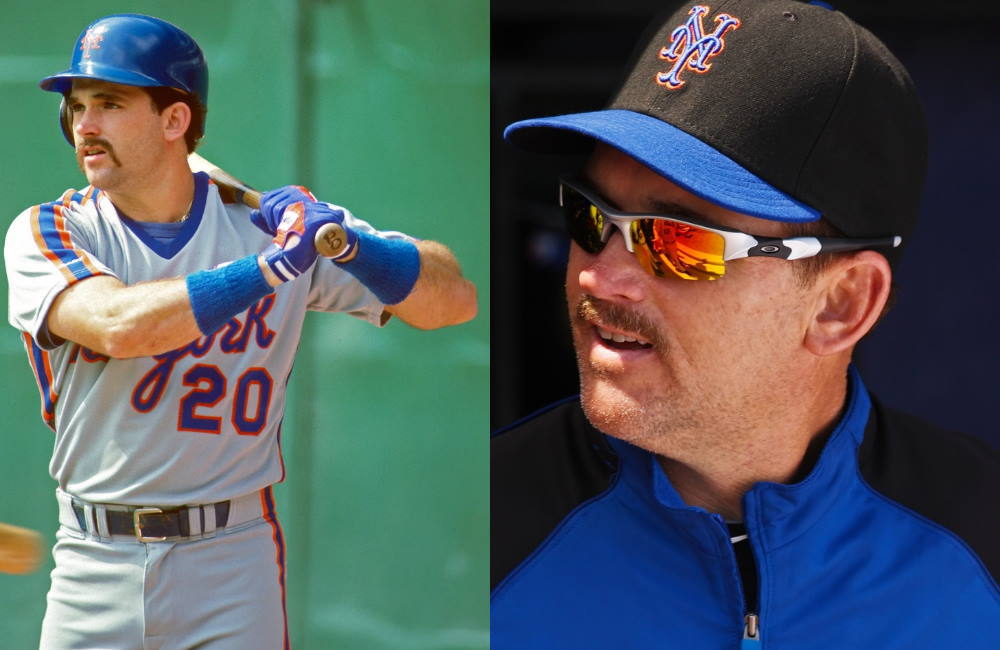Howard Johnson became one of the best-known MLB players in the 1980s, His time in the major includes playing on the colorful New York Mets team that beat the Boston Red Sox in the 1986 World Series. But his best years were in the late 1980s and early 1990s with the Mets.
Johnson also won a World Series earlier in his career with the 1984 Detroit Tigers. He’s remembered as a remarkably solid player for many years who provided a combination of power and speed.
He also led the National League in home runs in 1991 and runs scored in 1989, as well as making two All-Star teams and a winning two Silver Slugger awards. While his time as a star was relatively short, he’s remembered for this power hitting and for his perseverance in getting to the majors.
Howard Johnson’s Early Life
Johnson was born in Clearwater, Florida, on Nov. 29, 1960. Named after his grandfather, Johnson later said having a famous last name provided benefits. “Every Sunday after church, my mother would take my brother and me to the Howard Johnson’s restaurant for ice cream and lunch. The restaurant people knew me, and never charged for my lunch,” he told the New York Times in 1985.
Johnson played baseball for Clearwater High School as a pitcher. He later played for St. Petersburg Junior College. A standout at both levels, he got attention from major league clubs. Johnson almost went to New York as the first stop in his career. The New York Yankees drafted him in 1978, but he never signed in the Bronx. The Tigers drafted him in the secondary draft in January 1979 as a relief pitcher. But the Tigers soon switched him to shortstop.
Howard Johnson in the Minors
Johnson bounced back and forth between the minors and majors for the next few years. After his conversion to shortstop, Johnson spent two years with the Lakeland Tigers in the Florida State League. He committed 36 errors in 1979, and the Tigers moved him to third base.
In 1981, Johnson went to the Double-A Birmingham Barons, where he hit 22 home runs and drove in 83 runs. The Tigers had seen enough to call him up the following season. On April 14, 1982, Johnson made his debut. However, after hitting only .188 after 12 games in early May, the Mets sent Johnson back to the minors.
At the Triple-A level at Evansville, Indiana, Johnson produced 23 home runs and 35 steals in 98 games. The Tigers brought him back to the big club in August. Johnson hit .347 for the rest of the season. But his battle to make the majors was far from over.
The 1983 Season
Johnson came to spring training in 1983 in a battle for the starting third baseman job with Tom Brookens. When they broke camp for Detroit, the two were supposed to platoon, but Brookens ended up getting the majority of the bats. Johnson hit just .212 in 27 games, and the Tigers sent him back to Triple-A on May 27.
Once back in Evansville, Johnson played only three games before breaking a finger on June 1. This led to season-ending surgery. Brookens, by the way, hit .214 in 374 at-bats and 138 games for the Tigers that year, with six home runs and 32 RBI. He also committed 17 errors at third base.
Howard Johnson Reaches the Majors For Good
In 1984, coming off his surgery, Johnson once again entered camp in a battle, this time with outfielder Glenn Wilson, who was attempting to make a switch to third base. However, Wilson’s difficulties at third gave Johnson the chance to get more at-bats, although he shared time at third with Brookens, Barbaro Garbey and Marty Castillo.
The Tigers rolled to the American League pennant and won the World Series against the San Diego Padres. However, Johnson’s poor play in the second half of the season meant he spent less time on the field. He went hitless in the World Series, getting only one at-bat after coming in as a defensive replacement in the final game of the series.
The Tigers ended up trading Johnson to the New York Mets before the 1985 season, where he again struggled. As part of a platoon with Ray Knight, Johnson did not see regular action until he also started playing at shortstop again.
In the 1986 World Series, one of the best of all time, Johnson has no hits in only five at-bats, striking out twice. However, he got a great view of one of the greatest plays of all time, standing on deck during Mookie Wilson’s epic at-bat against Bob Stanley. He was the first to greet Kevin Mitchell when he scored from third on Stanley’s wild pitch, and the first to hug Knight as he scored the winning run after Wilson’s “little roller up along first” went through first baseman Bill Buckner’s legs.
At age 25, Johnson had two World Series rings. But those who watched baseball in the 1980s remember what came next. Johnson, allowed for the first time in his career to keep playing even when he had bad stretches, took off in 1987, hitting 36 home runs and driving in 99.
He hit at least 20 home runs each season between 1987 and 1991, making the All-Star Team in 1989 and 1991. He also won the Silver Slugger award in those two years.
Since his retirement after the 1995 season, Johnson has worked as a manager, hitting coach for the Tampa Bay Devil Rays, Mets, Seattle Mariners and the Toros de Tijuana of the Mexican League.


Leave A Comment